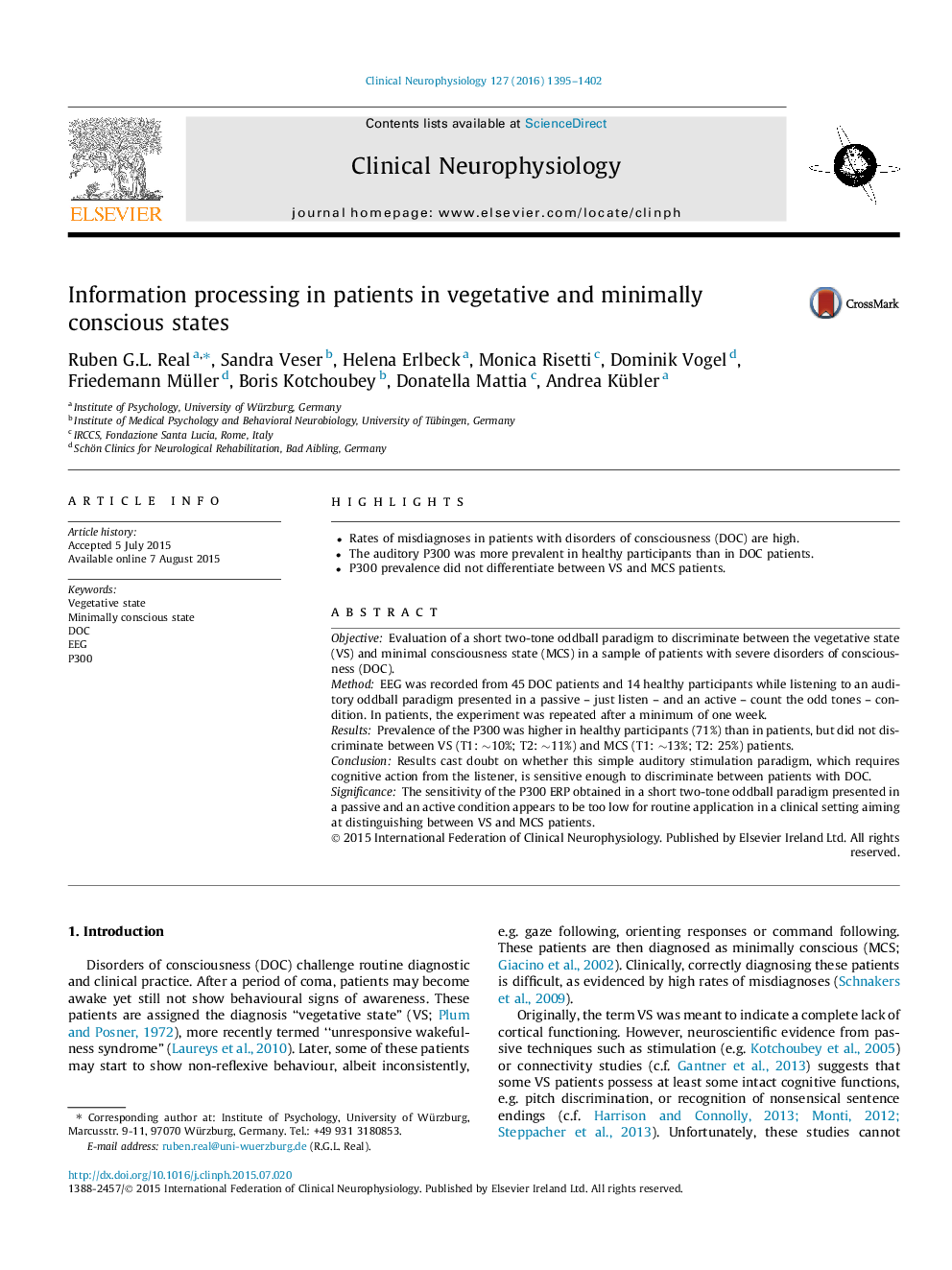| Article ID | Journal | Published Year | Pages | File Type |
|---|---|---|---|---|
| 6007602 | Clinical Neurophysiology | 2016 | 8 Pages |
â¢Rates of misdiagnoses in patients with disorders of consciousness (DOC) are high.â¢The auditory P300 was more prevalent in healthy participants than in DOC patients.â¢P300 prevalence did not differentiate between VS and MCS patients.
ObjectiveEvaluation of a short two-tone oddball paradigm to discriminate between the vegetative state (VS) and minimal consciousness state (MCS) in a sample of patients with severe disorders of consciousness (DOC).MethodEEG was recorded from 45 DOC patients and 14 healthy participants while listening to an auditory oddball paradigm presented in a passive - just listen - and an active - count the odd tones - condition. In patients, the experiment was repeated after a minimum of one week.ResultsPrevalence of the P300 was higher in healthy participants (71%) than in patients, but did not discriminate between VS (T1: â¼10%; T2: â¼11%) and MCS (T1: â¼13%; T2: 25%) patients.ConclusionResults cast doubt on whether this simple auditory stimulation paradigm, which requires cognitive action from the listener, is sensitive enough to discriminate between patients with DOC.SignificanceThe sensitivity of the P300 ERP obtained in a short two-tone oddball paradigm presented in a passive and an active condition appears to be too low for routine application in a clinical setting aiming at distinguishing between VS and MCS patients.
